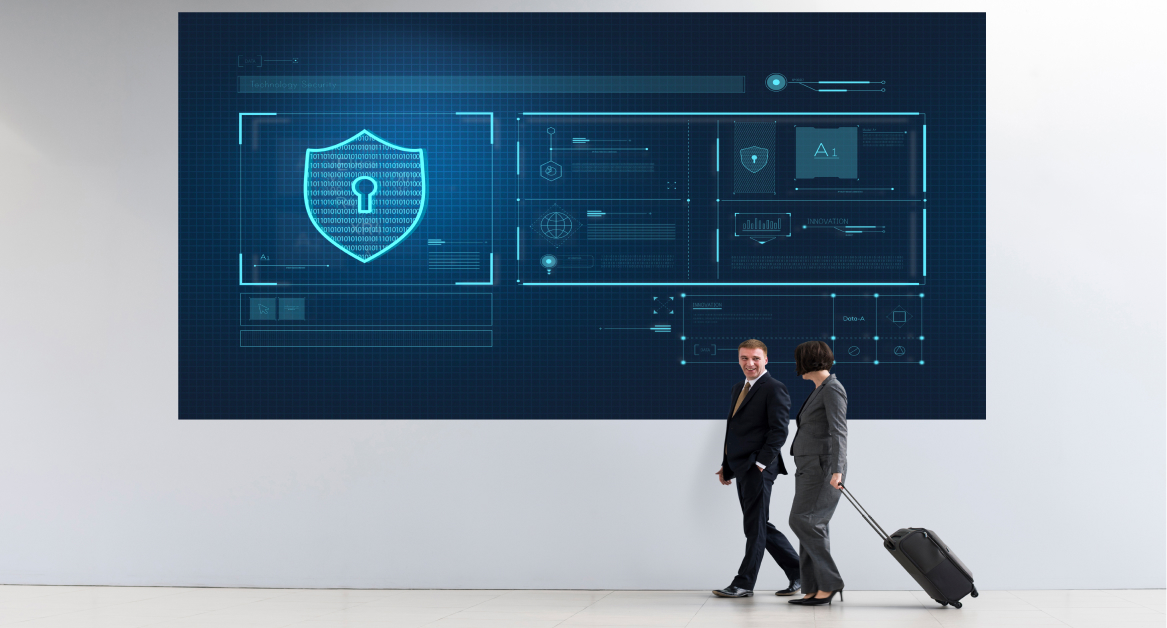Companies, especially those with distributed teams or remote employees, are responsible for safeguarding information assets such as client data, intellectual property, and operational systems. This is where ISO IEC 27001—an internationally recognized information security management system (ISMS)—plays a vital role.
Designed to enhance the confidentiality, integrity, and availability of your information, ISO 27001 offers a structured framework to manage security risks effectively. By implementing ISO 27001, businesses can not only protect themselves from potential security breaches but also demonstrate to clients and stakeholders that they prioritize data security.
About ISO 27001 Information Security Management
ISO 27001 is an international standard for information security management systems (ISMS), developed by the International Organization for Standardization (ISO) and the International Electrotechnical Commission (IEC).
It provides a systematic approach to managing sensitive information, ensuring its confidentiality, integrity, and availability. This security standard enables businesses to implement security policies and controls that align with global best practices.
Whether you’re managing remote employees or operating across multiple regions, your organization’s security posture hinges on a well-established ISMS like ISO IEC 27001.
By adhering to this international standard, businesses can mitigate security risks, safeguard client data, and avoid costly data breaches. Moreover, obtaining certification can enhance your company’s reputation, providing clients and stakeholders with confidence in your commitment to information security.
The origin of ISO IEC 27001
Brief history of ISO IEC 27001
The ISO IEC 27001 standard is part of the 27000 family of standards, which focuses on information security.
The need for a comprehensive framework for managing security risks became evident as the number of breach incidents grew in frequency. The ISO first introduced the 27001 standard in 2005 to address these concerns. Over the years, it has evolved to adapt to the changing nature of cyber threats.
Evolution of the ISO IEC 27001 Standard
Since its inception, ISO IEC 27001 has undergone several updates to keep pace with technological advancements.
- 1995 – BS 7799 Introduced: The first major standard for information security management.
- 2000 – BS 7799 Split: Divided into security controls (BS 7799-1) and ISMS requirements (BS 7799-2).
- 2005 – ISO 27001 Launched: ISO adopts BS 7799-2 and introduces a risk-based ISMS standard.
- 2013 – Updated Risk Focus: Enhanced risk management, leadership roles, and system alignment.
- 2022 – Modernized Controls: Fewer controls, with a focus on cloud security and operational resilience.
Today, it remains one of the most widely recognized standards for ensuring the security of information assets.
7 key principles of ISO 27001 Information Security Management system
At the core of ISO 27001 is the risk management process. This process is designed to identify potential vulnerabilities and implement appropriate information security controls. Below are the key principles that guide the implementation of the standard:

1. Risk management
At the heart of ISO 27001 is a structured approach to identifying, assessing, and managing security risks. Organizations are required to perform a risk assessment to identify potential threats and vulnerabilities to their information systems. Based on this, they develop a risk management process to mitigate, transfer, or accept risks in a systematic way.
Why it matters: A risk-based approach ensures that security measures are focused on the most critical risks, making the system efficient and cost-effective.
2. Confidentiality, integrity, and availability (CIA Triad)
ISO 27001 focuses on protecting the confidentiality, integrity, and availability of information, which is often referred to as the CIA triad:
- Confidentiality: Ensuring that information is accessible only to authorized individuals.
- Integrity: Safeguarding the accuracy and completeness of information and processing methods.
- Availability: Ensuring that authorized users have access to information and assets when needed.
- Why it matters: The CIA triad ensures that an organization’s information remains protected from unauthorized access, alteration, or loss, which is crucial for maintaining trust and operational stability.
3. Leadership and commitment
ISO 27001 emphasizes the importance of top management taking ownership of the ISMS. Leadership must demonstrate a commitment to information security, allocate the necessary resources, and integrate the ISMS into the organization’s overall strategy.
Why it matters: Leadership involvement ensures that information security is not seen as just an IT responsibility but as a core part of the company’s operations.
4. Continual improvement
A key principle of ISO 27001 is the need for ongoing evaluation and improvement of the ISMS. The standard requires regular internal audits, monitoring, and management reviews to ensure the system adapts to new threats and organizational changes.
Why it matters: Cyber threats evolve, and an organization must continuously improve its ISMS to stay ahead of new vulnerabilities.
5. Information security controls
ISO 27001 outlines a set of information security controls (found in Annex A) that organizations can implement to manage their security risks. These controls cover a wide range of areas, including access control, encryption, physical security, and incident response.
Why it matters: These controls provide a practical framework that organizations can tailor to their specific needs to protect against security breaches.
6. Context of the organization
ISO 27001 requires organizations to consider the context in which they operate, including internal and external factors that might affect their ISMS. This helps organizations align their security efforts with their unique operating environment and stakeholder expectations.
Why it matters: This principle ensures that the ISMS is relevant and effective in the organization’s real-world environment, accounting for industry, geographic, and regulatory factors.
7. Documentation and evidence
Maintaining thorough documentation is a crucial aspect of ISO 27001. Organizations must keep records of their security policies, risk assessments, incident reports, and audit results. This documentation serves as evidence during audits and supports transparency and accountability.
Why it matters: Proper documentation ensures compliance and allows for the easy demonstration of security measures during audits or reviews.
These principles are vital to maintaining an effective ISMS that can evolve with your business and its security needs.
The ISO 27001 certification process
Obtaining ISO 27001 certification involves a series of steps that ensure your business complies with the standard’s requirements. Below is a simplified overview of the process:

- Gap analysis – Conduct a gap analysis to identify areas in your existing information security framework that need improvement.
- Develop an ISMS – Design and implement an information security management system tailored to your organization’s needs.
- Internal audit – Conduct an internal audit to ensure that your ISMS meets the standard’s requirements.
- Certification audit – Engage with a third-party ISO 27001 consultant or certification body to audit your ISMS for compliance with the ISO 27001 standard.
- Certification – Once the audit is successfully completed, your organization will be awarded the ISO 27001 certification, showcasing your commitment to information security standards.
Structure of ISO 27001 Information Security Management System
The structure of ISO 27001 is built around the Plan-Do-Check-Act (PDCA) model, which ensures continuous improvement of an organization’s security practices. The framework consists of 10 clauses, with Clauses 4 through 10 laying out the core requirements for implementing an ISMS:
- Clause 4: Context of the Organization – Understanding external and internal factors that influence security.
- Clause 5: Leadership – Ensuring management commitment to the ISMS.
- Clause 6: Planning – Outlining risk assessment and treatment processes.
- Clause 7: Support – Documenting resources, awareness, and communication.
- Clause 8: Operation – Implementing and managing security controls.
- Clause 9: Performance Evaluation – Monitoring, auditing, and reviewing the ISMS.
- Clause 10: Improvement – Continually enhancing security measures and addressing issues.
These elements provide a structured approach to designing, implementing, and monitoring a company’s ISMS.
Furthermore, the most critical components of the ISO 27001 structure include the following:
- Risk management process: This involves identifying, analyzing, and evaluating potential risks to the organization’s information.
- Security controls: These are specific measures outlined in Annex A of ISO 27001 to help businesses manage and mitigate risks. The related standard, ISO IEC 27002, provides detailed guidance on selecting and implementing these controls.
- Leadership and support: Ensuring that leadership is involved and committed to the success of the ISMS is crucial, as is providing adequate resources for its maintenance.
The effectiveness of the ISMS relies on the continuous monitoring and updating of these key elements.
ISO 27001 vs other information security standards
While ISO 27001 is one of the most recognized international standards for information security, it is not the only one. Others include ISO IEC 27002, which provides guidance on the application of security controls, and NIST (National Institute of Standards and Technology) frameworks.
However, ISO 27001 stands out due to its focus on the risk management process, a comprehensive information security framework, and its global recognition. Businesses considering ISO 27001 will benefit from its broad applicability.
To understand more about the costs and budgeting for ISO 27001, visit ISO 27001 Cost. If you’re considering expert help, check out our advice on working with an ISO 27001 Consultant.
How implementing ISO 27001 can strengthen your security posture
For businesses operating in a world of remote and hybrid work, implementing ISO 27001 offers significant benefits:
- Stronger data security: ISO 27001 provides a comprehensive framework to manage security risks, protecting your business from data breaches and ensuring compliance with information security standards.
- Enhanced client trust: Certification demonstrates to clients and stakeholders that your business takes security seriously.
- Operational efficiency: With clearly defined processes for risk management and information security, your business can operate more efficiently, even in a distributed environment.
As a full-stack IT platform, Esevel helps global businesses with device management, cybersecurity, and comprehensive IT support. Whether you need help with ISO 27001 implementation or managing your company’s IT infrastructure, Esevel can provide the tools and expertise you need to reach the ISO 27001 standards in 2 weeks.







